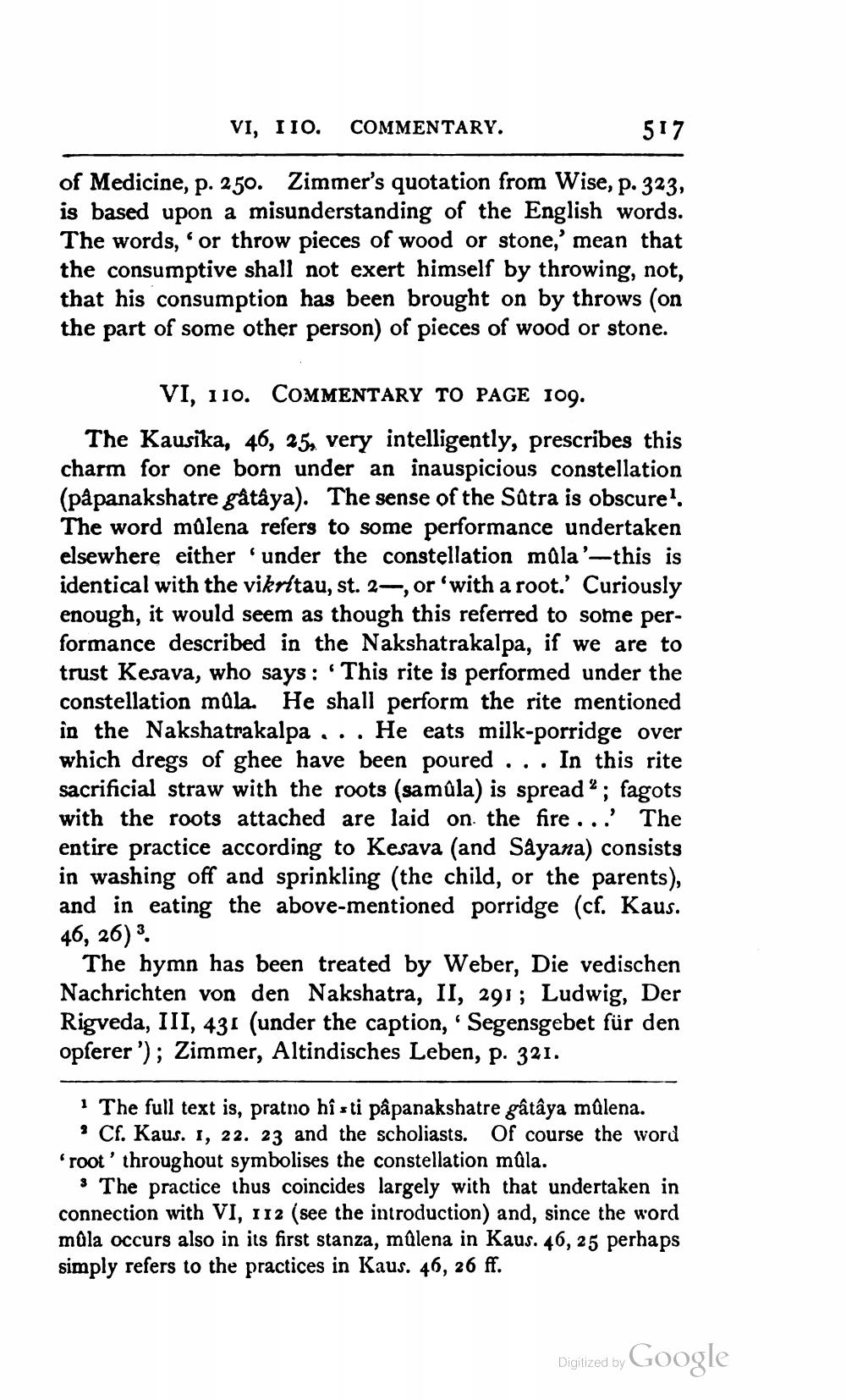________________
VI, 110. COMMENTARY.
517
of Medicine, p. 250. Zimmer's quotation from Wise, p. 323, is based upon a misunderstanding of the English words. The words, or throw pieces of wood or stone,' mean that the consumptive shall not exert himself by throwing, not, that his consumption has been brought on by throws (on the part of some other person) of pieces of wood or stone.
VI, 110. COMMENTARY TO PAGE 109. The Kausika, 46, 259. very intelligently, prescribes this charm for one born under an inauspicious constellation (papanakshatre gåtâya). The sense of the Satra is obscure?. The word mulena refers to some performance undertaken elsewhere either under the constellation mala'--this is identical with the vikritau, st. 24, or with a root.' Curiously enough, it would seem as though this referred to some performance described in the Nakshatrakalpa, if we are to trust Kesava, who says: "This rite is performed under the constellation mala. He shall perform the rite mentioned in the Nakshatrakalpa . . . He eats milk-porridge over which dregs of ghee have been poured . . . In this rite sacrificial straw with the roots (samula) is spread?; fagots with the roots attached are laid on the fire ... The entire practice according to Kesava (and Sayana) consists in washing off and sprinkling (the child, or the parents), and in eating the above-mentioned porridge (cf. Kaus. 46, 26).
The hymn has been treated by Weber, Die vedischen Nachrichten von den Nakshatra, II, 291; Ludwig, Der Rigveda, III, 431 (under the caption, 'Segensgebet für den opferer '); Zimmer, Altindisches Leben, p. 321.
1 The full text is, pratno hîsti pâpanakshatre gâtâya mûlena.
Cf. Kaus. I, 22. 23 and the scholiasts. Of course the word 'root' throughout symbolises the constellation mûla.
The practice thus coincides largely with that undertaken in connection with VI, 112 (see the introduction) and, since the word můla occurs also in its first stanza, mûlena in Kaus. 46, 25 perhaps simply refers to the practices in Kaus. 46, 26 ff.
Digized by Google




